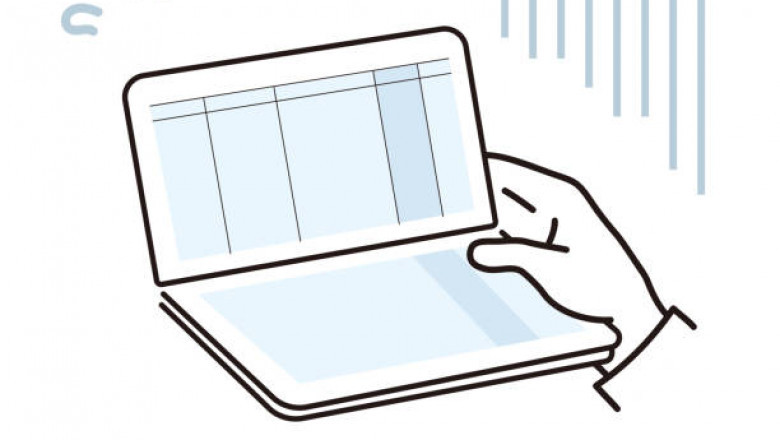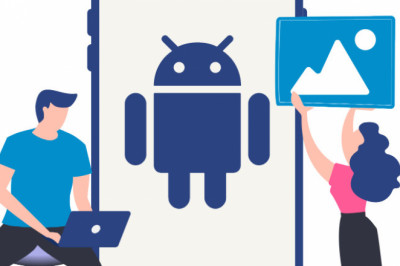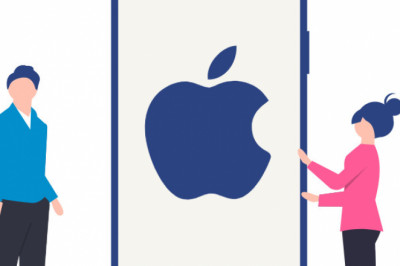views

Canada's check clearing system is one of the most efficient in the world. Although the use of checks is declining due to the growing popularity of electronic and card payments, financial institutions across the country process nearly one billion checks a year 1 .
A check is a payment agreement between two individuals or organizations. When you write a check, you instruct your bank to pay the specified amount to the person or organization on whose behalf you are writing the check.
Here is some useful information about checks and their process by financial institutions.
Check processing
All checks are processed – cleared and settled – in the payment system. Here is how this process unfolds. When you deposit a check into your account, your bank will send it to the signer's bank. The bank in question will verify the legitimacy of the check and the level of funds in the account before sending the funds to your bank.
The process can take several days. However, in most cases, the bank does not wait for the answer of the signatory's bank before remitting the full amount of the check to the customer. But only after receiving confirmation from the bank can she be sure that the funds are available and she will receive the money. What most people don't realize is that until the bank receives confirmation that the funds exist, the amount they pay to clear the check is, in fact, the cash advance it grants to the customer.
Hold checks
Banks may place a hold on funds deposited by check to manage the risk of loss if there are insufficient funds in the account on which the check was drawn. This holdback also protects the payee of the check as they will not spend the funds from a check that is ultimately dishonoured, due to insufficient funds in the check signer's account. When a customer opens an account, the bank must provide them with their hold policy in writing. The maximum hold period for most Canadian dollar items deposited into a Canadian dollar account is four business days. In addition, the bank must, within one day, make available to the customer $100 of the deposited sum.
If your financial institution currently places a hold on your checks, ask if another option is available. Also, instead of physically receiving a paycheck from your employer, government, or other source, ask whether to make a direct deposit to your account or send you a transfer. electronically by email. Thus, you will have immediate access to all the funds.
Insufficient funds
If you deposit a check drawn on an account that does not contain a sufficient amount, the check will be returned due to insufficient funds. In the event that your bank has given you immediate access to the sum, it will have to adjust the balance of your account by subtracting the sum thus deposited. Both the person who signs a NSF check and the person who deposits one (even without knowing it is a NSF cheque) will incur an administration fee. You can avoid this fee by only accepting checks from trusted signers and signing a check only if you have the funds to cover it.
Post-dated checks cashed before due date
Sometimes a post-dated check is deposited before the date it is due. Banks have mechanisms in place to detect post-dated checks and do their best not to process such a check before its date.
You can help detect post-dated checks that are deposited in advance. Try reviewing the transactions made on your account (online, mobile, ATM, phone or branch). If a post-dated check you signed is accidentally processed before its date, you will need to contact your bank to let them know. The check may be returned and the amount returned to your account until the date written on the check.
Countersigned checks (cashed by someone other than the payee)
A check may be legally deposited by a person other than the person whose name appears on the check. Just put it on. For example, if Suzanne Yu writes a check in the name of Mario Tremblay, the latter can endorse this check and give it to you as repayment of a debt he may owe you. After signing the back of the check, you can deposit it into your account. This is a check countersignature, an action permitted in Canada. In order to protect herself against any fraudulent manoeuvre, Suzanne Yu may write on the back of the check “for deposit in the policyholder's account only” and affix her signature. The check can then only be deposited in Mario Tremblay's account.
Check with your financial institution if they accept countersigned checks and if they have any specific requirements.
Stop payment
A "stop payment" is a service provided by your financial institution, usually for a fee, to prevent the cashing of a check you have issued. However, if you make a stop payment on a check, there is no guarantee that this check will not be processed, or that the funds will not be withdrawn from your account.
For a stop payment to work, your request must be made and processed before the check is cashed. Sometimes a check can still be cashed if you provide incorrect or incomplete information about the amount, date or name of the payee.
If you make a stop payment and the check has been cashed, you will still be responsible for the check. In order to get your money back, you will need to contact the person or organization the check was made out to
Fraudulent and counterfeit checks
Criminals can sometimes create fraudulent checks or change the name or amount written on a check. Either way, it's a scam . You can take steps to prevent such fraud.
- Always keep your checks in a safe place.
- Review your monthly bank statement or regularly check your transactions online or over the phone. If you notice any transactions you didn't make, notify the bank immediately so they can investigate.
- If you close your account, shred any checks you have left.
- If you receive a check that doesn't look valid, ask for another form of payment.
You can learn more about check fraud and how to protect yourself by visiting the Fraud Prevention section .
Mobile Check Deposit
It is now possible to deposit a check from a mobile device! Simply take a picture of the check (personal or business) or certified check (depending on the bank) and deposit it electronically using your mobile device. Several banks in Canada now offer this service.
The process is simple. Log in to your mobile banking app and follow your bank's guidelines. Basically, you must endorse the check, take a photo of the front and back, indicate the amount and the account you want to deposit it into, before uploading the photo. The process is secure and your financial information will not be stored on your mobile device. Also, all financial data will be fully encrypted. Thereafter, you can mark the check as "deposited" and keep it in a safe place for a short period of time (usually two weeks, but confirm with your bank) before destroying it.












